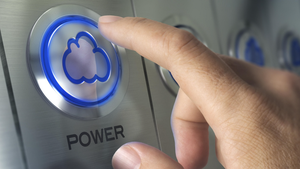
Insight and analysis on the data center space from industry thought leaders.
Data Centers Must Evolve to Meet Growing Power Density DemandsData Centers Must Evolve to Meet Growing Power Density Demands
Data center modernization is crucial as AI drives demand for higher power density, writes Tod Higinbotham.
July 26, 2024

Every day, thousands of data centers – millions of square feet of compute capacity – are put to work. The advent of AI is fueling the need for even more growth. At some point, however, every growing market runs up against obstacles. In the case of data centers, one major obstacle is simply the lack of available space and power in desirable locations.
Consider the market in Northern Virginia, the largest data center market in the world. According to 2023 data from Cushman & Wakefield, the region is home to around 300 data centers, offering a total capacity of more than 2,500 MW – four times the capacity of the second-largest American market, Dallas, which offers 654 MW.
It should come as no surprise the region is of interest to data center operators. Northern Virginia is located at the seat of US power, just across the river from Washington, DC. Half a century ago, this led to investments in data storage and connectivity that laid the groundwork for a robust tech industry.
However, as Cushman & Wakefield noted, the market there “encountered an unprecedented multi-year pause on development” in 2022, due to “the growing pressures of limited power and land.” As Governing.com wrote, the proliferation of data centers in Northern Virginia has “become harder to ignore, igniting opposition to projects that encroach on residential neighborhoods and Civil War battlefields.”
Why Density Matters
The real estate and utility power crunch in desirable data center locations underscores how data center operators need to be thinking about power density. However, real estate scarcity is just one reason power density matters. The power demands of AI are significant, and the nascent technology is quickly becoming table stakes for the enterprise.
Meanwhile, as demand for compute increases, chipmakers are rising to the occasion. For instance, there are GPUs on the market designed for AI and high-performance computing applications that at peak power consumption consume more power than the average American household.
All told, US data center power consumption is anticipated to skyrocket in the coming years. By 2030, it should reach 35GW, according to a report from commercial property consultancy Newmark – nearly double its 2022 level. Density will be key to meeting these power needs. Per the report, hyperscalers will need data centers that support 40-to-60 kW per rack.
Power density isn’t just necessary to accommodate more demanding workloads – it’s also a financially smart move. By installing higher-density racks, an organization can reduce the relative number of racks it needs to maintain, as well as cabling, power distribution units, and other infrastructure.
Getting More Power Per Rack
To make more kilowatts available per rack, data center architects should consider emerging technologies like nickel-zinc (NiZn) batteries.
Many data centers include an uninterruptible power supply (UPS) – a battery backup system to ensure that in the event of a power outage, critical systems keep running and vital data is preserved. Traditionally, UPS systems have relied on lead-acid batteries, but nickel-zinc batteries offer twice the power density.
Higher power density in a battery means nickel-zinc batteries will discharge at high rates of power, making it optimal for a backup system that's expected to keep mission-critical systems running, within milliseconds after a power outage.
Meanwhile, by adopting nickel-zinc batteries, a data center operator can build an even denser environment by reducing the footprint of cooling systems and other safety infrastructure. Nickel-zinc batteries are non-flammable – they exhibit no thermal runaway – making them a safe alternative to both lead-acid and lithium-ion batteries. Typically, cooling systems consume around 40% of a data center’s power, so reducing that infrastructure is a surefire way to improve a data center’s power usage efficiency (PUE). There are other techniques for improving rack density, such as moving from alternating current (AC) power to direct current (DC) power.
Greater power density is coming to the data center – there’s simply no other option, given the demands of AI and the scarcity of real estate in preferred locations. But by leveraging new technologies, data centers can prepare for a future that includes AI, high-performance computing, and other power-hungry innovations that drive the future of business.
Tod Higinbotham is COO of ZincFive, a manufacturer of nickel-zinc batteries and power solutions.
About the Author
You May Also Like









